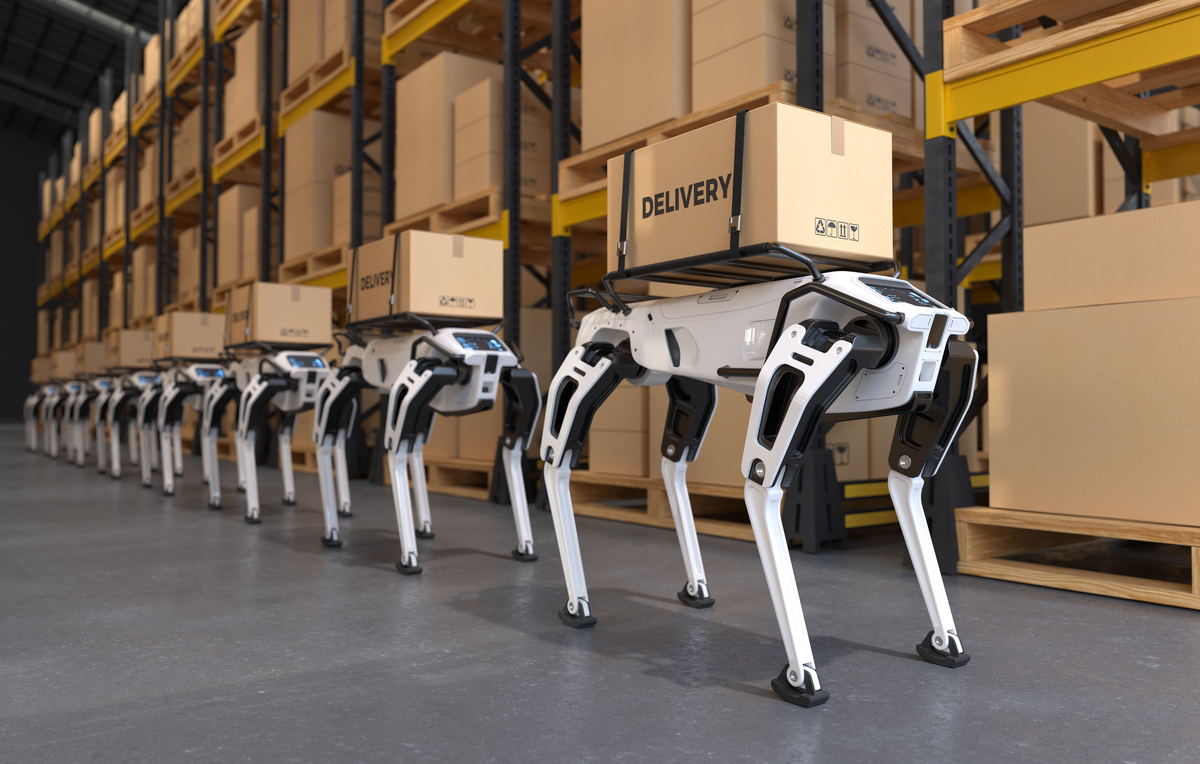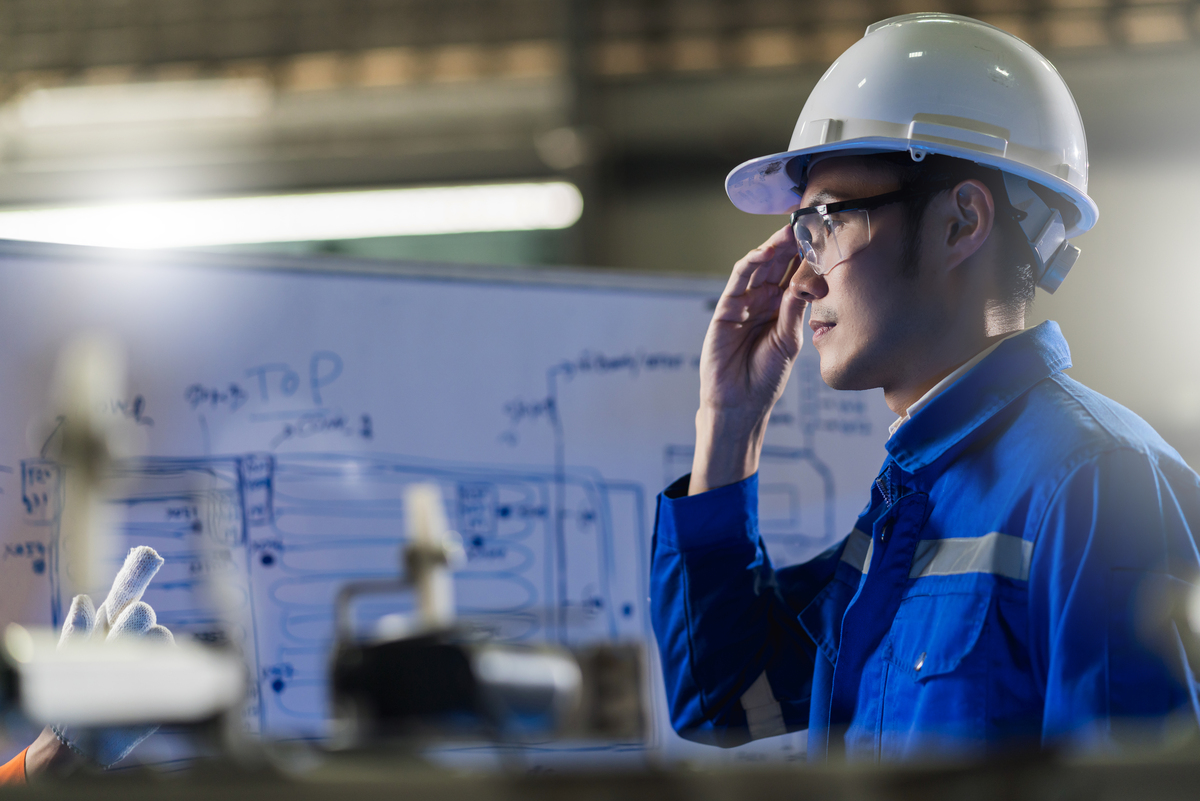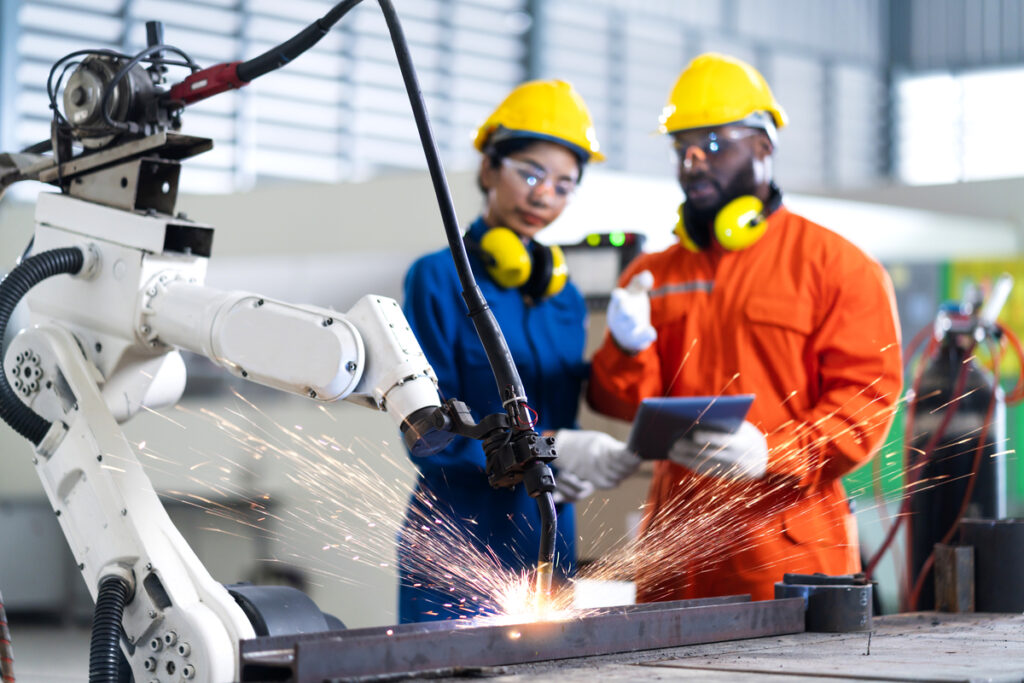Exclusive Neuroject Article: The Fourth Industrial Revolution, or Industry 4.0, is rapidly reshaping the manufacturing landscape by combining advanced digital technologies, automation, and data-driven procedures. The Digital Factory in Industry 4, a connected and smart production environment that leverages the power of emerging technologies, is at the core of this revolution. As traditional factories adapt to meet the ever-changing demands of global markets and sustainability objectives, this system has emerged as an essential driver of innovation and competitiveness in the manufacturing sector.
This article aims to examine the Digital Factory concept, its key technologies, and its vital role in the implementation of Industry 4.0. Furthermore, the advantages and disadvantages of adopting this system will be explored. Also, some successful implementations and the future of Digital Factories will be discussed. By emphasizing the significance of embracing this new paradigm for long-term success in an ever-changing industry, we hope to provide insights and guidance to readers.
Evolution of Manufacturing
The development of manufacturing can be followed back to four major industrial upheavals, each of which has had a considerable effect on the way products are made and circulated. Recognizing this historical framework helps us understand the transformative capacity of Digital Factories in the contemporary era.
Industry 1.0, also known as the initial industrial revolution, was introduced in the late 1700s with the emergence of automated production, driven largely by steam engines and waterwheels. This period announced a transition from Hands-On work to machinery-aided fabrication which resulted in enhanced efficiency and greater production.
The late 1800s and early 1900s was the time when the second industrial transformation, also known as Industrial Revolution 2.0, emerged due to the introduction of electrical power and the development of the assembly line. Advancements such as the telegraph, phone, and electric-driven equipment profoundly modified manufacturing methods, facilitating large-scale production and decreasing manufacturing costs.
Industry 3.0 which took place in the middle of the 20th, is distinguished by the incorporation of computer technology, automation, and robotics into manufacturing. The third industrial revolution observed the emergence of computers and programmable logic controllers (PLCs), enabling better management, accuracy, and versatility in production processes.
The fourth industrial revolution, Industry 4.0, is a radical transformation that fundamentally revolutionizes the manufacturing processes by converging physical and digital systems. Digital factories that take advantage of digital technologies such as the Internet of Things (IoT), Artificial Intelligence (AI), Machine Learning (ML), and robotics to create a data-driven production are at the center of this revolution. The transition to Industry 4.0 has been driven by several factors, including increasing globalization, growing consumer demands for customization and sustainability, and rapid advancements in digital technologies.
Suggested article for reading: 7 Important Construction Technology in 2024
What is a Digital Factory?
The first three industrial revolutions were marked by the transformations introduced by the steam engine, electrical power, and computing technology. In the fourth industrial revolution, the digital manufacturing facility employs a variety of devices connected to the Internet of Things (IoT), all incorporated within a unified network. This network consists of both in-house operations and external participants, including sales, purchasing, research and development, logistics systems, and customers.
The primary objective of a Digital Factory is to assist a company in evolving positively, providing superior products and services. In pursuit of this aim, factories seeking to follow this path establish multidisciplinary teams that employ repetitive tools and methods to produce identical products, but with each cycle, they present novel experiences, services, and even improved resolutions. Digital Factory teams operate in close collaboration with commercial teams to expedite expansion opportunities for the enterprise.
The idea of Digital factories is gaining popularity among producers seeking innovative technologies to boost efficiency and maintain significance. They can improve a manufacturer’s decision-making process to streamline operations. A robust database is established in the process, which acts as a foundation for promoting advancement. Digital Factory is already being integrated into contemporary enterprise resource planning and Internet of Things initiatives. Disruptive technologies will elevate manufacturing to new heights, and this system facilitates this transition.
Disruptive technologies are making way for Digital Factory systems, and smart manufacturing is gaining momentum. Smart manufacturing is a reference to data-enhanced technologies that pave the way for intelligent, data-based decision-making in everyday operations. In many ways, smart factories are synonymous with digital factories.

Suggested article for reading: What is IoT in Construction? Definition, Applications and Steps (2024)
Core Technologies in Digital Factories
Digital factories mainly rely on state-of-the-art technologies that could be taken into account as the main factor in the optimization of production procedures, innovation, and increased operational performance in manufacturing processes. Some of the primary technologies will be discussed in the following paragraphs.
Internet of Things: IoT devices that enable clear communication and data delivery among machines, equipment, and production systems. This connection between devices results in real-time monitoring, control, and optimization of processes, improving efficiency and reducing downtime.
AI and ML: Artificial Intelligence (AI) and Machine Learning (ML) algorithms facilitate learning from data, adoption to new conditions, and optimizing processes over time for machines that could be the major factor in automation enhancement, product quality improvement, and human error reduction.
Robotics and Automation: Advanced robotics and automation systems streamline production processes, increasing productivity, and reducing the need for manual labor. Collaborative robots, or cobots, can work alongside humans, enhancing flexibility and efficiency.
Additive Manufacturing (3D Printing): 3D printing allows for rapid prototyping, on-demand production, and customization. This technology reduces lead times, inventory costs, and waste while enabling more complex and innovative designs.
Digital Twin and Simulation: Digital twins are virtual models of physical assets or processes, allowing for real-time monitoring, testing, and optimization. This technology improves performance, reduces downtime, and supports predictive maintenance strategies.
Cloud Computing and Edge Computing: Cloud-based solutions offer scalable computing resources, while edge computing enables real-time data processing and decision-making at the factory level, reducing latency and improving efficiency.
Augmented Reality (AR) and Virtual Reality (VR): AR and VR technologies support workforce training, remote assistance, and visualization of complex production data, enhancing overall operational efficiency.

Benefits of a Digital Factory
Confronting a worldwide pandemic, interrupted supply chains, and drastic changes in demand, the manufacturing domain is compelled to be nimbler and more flexible. Firms that are unable to adjust rapidly will fall behind. Digital transition provides organizations with the means to amass comprehensive data that can disentangle a manufacturing process and foster growth possibilities. While any advancement in digital transformation is beneficial, there are particular advantages stemming from the interconnected data of a Digital Factory.
In the manufacturing sector, businesses frequently concentrate on the product lifecycle—however, there exists a factory lifecycle as well. To optimize efficiency, the setting in which manufacturing occurs must be refined. That is the ultimate goal of digitalization. Due to automation and an interconnected network, data circulates more swiftly in a Digital Factory compared to conventional manufacturing. Producers can capitalize on insights for a swifter design and engineering procedure, adjust solutions, and make prompt decisions.
Furthermore, the Digital Factory facilitates adaptable manufacturing. With intelligent machinery, firms become more resourceful and can promptly discover alternative resolutions to alter direction, implement changes, or adjust to novel situations. If manufacturers cannot obtain a component because of supply-chain issues, they can produce it internally or collaborate with another manufacturer. Employing this versatile model, companies can devise solutions that result in new income sources, increased innovation, and minimal disturbances.

Utilizing a data-centric approach, enterprises possess the knowledge that can assist them in striving towards sustainability objectives outlined by industry norms, state or federal authorities, or the manufacturer itself. Some companies are even incorporating a sustainability position within their executive teams, dedicated to monitoring these measurements, leading eco-friendly policies, and guaranteeing the organization remains compliant.
Mass personalization is swiftly turning into a vital competency for manufacturers. Customers are willing to pay extra for items they can personalize. By employing a Digital Factory, manufacturers can cater to this increasing appetite for tailored products by utilizing small-scale production or incorporating features into existing products. One client may request 1 million conventional pens, while another might desire 1,000 titanium pens. A third customer might prefer 10,000 green pens. With a Digital Factory, manufacturers can effortlessly tailor each order by making diverse design and production decisions.
Digital Factories promote streamlined operations by eradicating superfluous actions, merging workflows, and automating procedures. This collectively results in reduced expenses and amplifies the time employees can dedicate to tasks that add value.
Challenges and Solutions in Implementing a Digital Factory
The fourth industrial revolution has transformed the manufacturing industry, with Digital Factories playing a crucial role. Nonetheless, manufacturing enterprises may encounter various obstacles when attempting to digitalize their procedures.
Enormous variation in data sources presents a significant problem manufacturers grapple with when establishing Digital Factories. Companies also confront difficulties when merging information technology and operational technology. Identifying the appropriate solutions platform to harmonize diverse aspects of speed, adaptability, and scope can be challenging as well. An enterprise must seek innovations that tackle each of these concerns to discover a solution that is most suitable for their needs.

Locating the appropriate talent to execute a Digital Factory poses a considerable obstacle. A professional’s expertise must be domain-specific, and numerous enterprises struggle to secure the perfect candidate. This issue can be resolved by developing talent initiatives that investigate various demographics and talent reservoirs. Companies will need to cooperate with suitable educational institutions to identify talent at an early stage.
Innovation is crucial for establishing a Digital Factory and enhancing its productivity. Nevertheless, innovation presents an array of difficulties. With a multitude of choices accessible in the present day, identifying the appropriate transformative agent is tough. Employing real-time digital performance management can aid enterprises in capitalizing on the correct inventive technology.
To encourage the development and execution of a Digital Factory, enterprises should seek a platform design that encompasses all potential hazards. They can provide your company, its workforce, and the products you produce with a dynamic edge, regardless of worldwide position.
The Future of Digital Factories
Even though 85% of businesses hastened digital transformation amid the pandemic, Digital Factories have not become the standard just yet. However, how would a future encompassing a digital-factory environment appear?
At present, the notion of a Digital Factory revolves around technology, machinery, instruments, and robots. However, it ultimately boils down to what these machines offer: data. The future of this system involves merging information from various sources and asking, “What does this amalgamated data disclose?” Linked data results in more than just smart manufacturing: It will give rise to intelligent manufacturing. A smart factory provides the details needed to execute specific actions for optimizing the facility and attaining a particular quality. With intelligent manufacturing, the factory will also utilize data to make decisions, such as machines that can detect when something is amiss and self-correct autonomously.
Where is all this information going to reside? On platforms in the cloud, where this real-time perspective allows for a comprehensive view of operations. Beyond merely dismantling silos, platforms will also grow more potent, extending past the boundaries of the Digital Factory to facilitate integrated factory modeling (IFM). IFM encompasses more than just the structure and its contents. It includes the surrounding context—such as infrastructure, parking areas, water management, storage facilities, and office buildings—linking everything internally and externally. With this unified factory model, manufacturers can also connect suppliers, vendors, contractors, and stakeholders in a shared data environment. This implies they can all operate on the same data simultaneously, forging the ultimate instrument for collaboration.

Conclusion
Digital Factory represents a critical shift in the manufacturing landscape, driven by the convergence of advanced technologies and data-driven processes that define Industry 4.0. By harnessing the power of IoT, AI, robotics, Big Data, and other cutting-edge technologies, Digital Factories are revolutionizing the way products are designed, produced, and distributed, offering a multitude of benefits to manufacturers.
This system enables manufacturers to achieve greater efficiency, productivity, and flexibility, while also addressing the growing demands for customization, sustainability, and supply chain integration. Additionally, Digital Factories pave the way for workforce development and upskilling, preparing employees for the challenges of the future manufacturing environment.
As global markets continue to evolve, and consumer expectations shift, adopting Digital Factory and the innovations they bring is not just an option, but a necessity for manufacturers seeking long-term success and competitiveness. By investing in this concept, manufacturers can unlock the full potential of Industry 4.0, positioning themselves at the forefront of technological advancements and driving sustainable growth in a rapidly changing world.
Suggested article for reading:
Lean Construction Principles and Practical Examples
Top 7 Sustainable Architecture Projects
Resources:
For all the pictures: freepik



